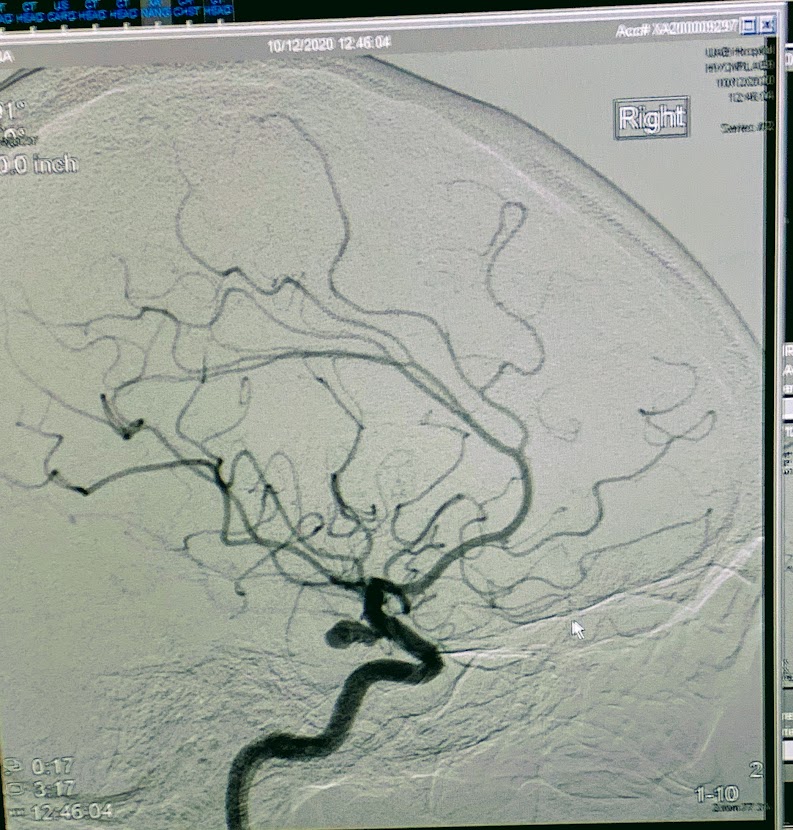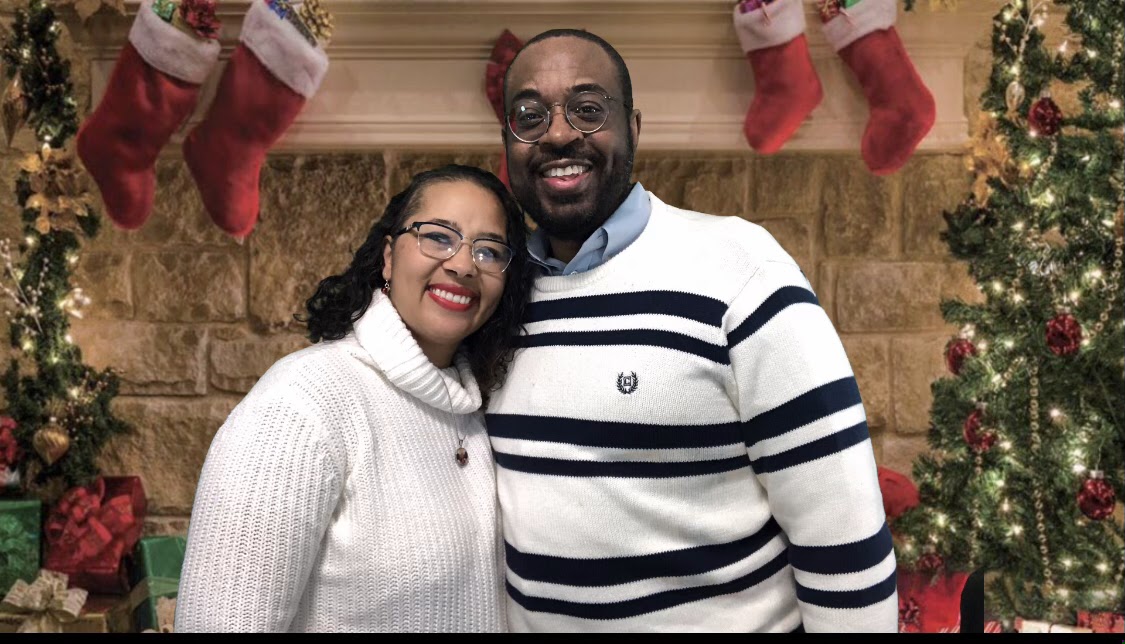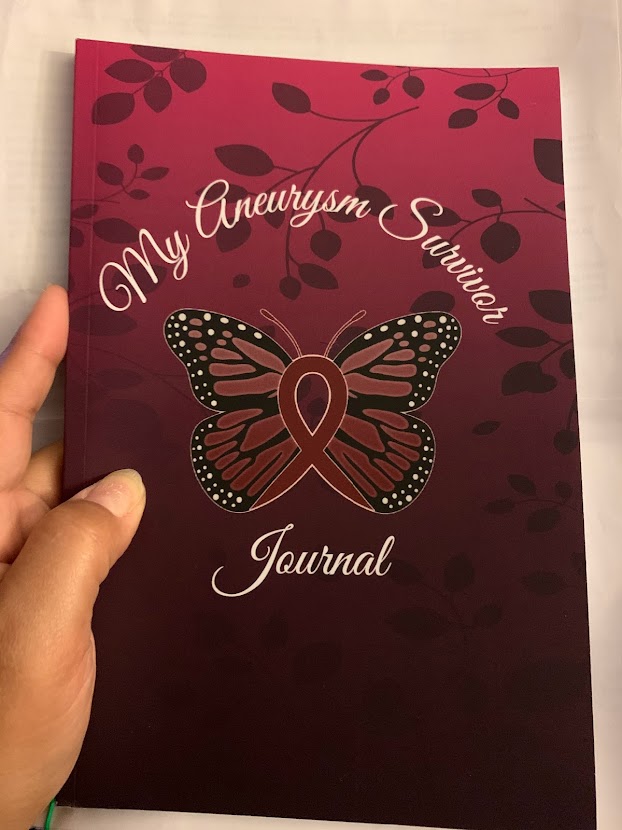Media contact: Bob Shepard

Redd and her husband are both Auburn graduates and lifelong Auburn fans. She received her undergraduate degree from the university, currently works there in the Alumni Professional Affairs Office in the College of Pharmacy and is pursuing her Ph.D. from Auburn. Both of her children are even named after buildings on Auburn’s campus.
The sharp pain in Redd’s head did not last long; but a dull pain lingered, like a migraine. She did not have any other symptoms, no light sensitivity, speech impairment or vomiting, so no alarm bells were going off for Redd and her family.
“I just thought that I would drink some more water, take pain medication and lie down to treat what I believed was a headache,” Redd said.
When Redd awoke Sunday morning with the same pain, her husband insisted on taking her to the ER immediately.
The health care center they visited evaluated Redd and suspected a migraine. They saw nothing alarming in the initial CT scan. So health care providers gave Redd a ketorolac injection for her pain and sent her home, with the suggestion of getting a CT with contrast if her symptoms did not improve.
Later that afternoon, however, when Redd woke up from about a two-hour nap, she realized she could not open her right eye. She tried and tried with no success, and she and her husband knew it was time to again seek medical treatment.
So they visited another medical center that performed the CT with contrast. As soon as they got the results back, the medical team knew they had to act quickly — Redd had a ruptured brain aneurysm.
An aneurysm is a bulge in a blood vessel caused by a weakness in the blood vessel wall that results in blood pressure increasing in a small area and ballooning the blood vessel. It is a very serious condition that often shows no symptoms until it ruptures. When an aneurysm ruptures, there is a risk that people can suffer permanent brain damage or even die.
It is estimated by the Brain Aneurysm Foundation that one in 50 Americans has an unruptured brain aneurysm, and that women are more likely than men to have a brain aneurysm at a three to two ratio. An aneurysm can occur anywhere in the vascular system, but it is most commonly found in the brain, aorta and intestines.
Immediately following her CT with contrast, the medical team wanted to transport Redd to UAB Hospital by helicopter. Unfortunately, it was storming and the only option was for Redd to be taken from the medical center in Opelika all the way to UAB via ambulance that Sunday night.
When she arrived at UAB, Redd was taken under the care of Department of Neurosurgery Assistant Professor Elizabeth Liptrap, M.D. Liptrap and her team performed an angiogram on Redd following up with surgery to clip her aneurysm on Monday morning.
Aneurysm clipping Tanja and her husband Kelvin are active in aneurysm community groups on social media, and attended the UAB Aneurysm Support Group. is performed to block off an aneurysm from the brain’s blood vessels to prevent any further leaking of blood from the site. It can be a high-risk procedure, and there is a possibility of having a stroke or an aneurysm re-rupturing in the operating room, which can be fatal. Liptrap’s clinical practice is centered around cerebrovascular disorders, like aneurysms.
Tanja and her husband Kelvin are active in aneurysm community groups on social media, and attended the UAB Aneurysm Support Group. is performed to block off an aneurysm from the brain’s blood vessels to prevent any further leaking of blood from the site. It can be a high-risk procedure, and there is a possibility of having a stroke or an aneurysm re-rupturing in the operating room, which can be fatal. Liptrap’s clinical practice is centered around cerebrovascular disorders, like aneurysms.
“Tanja was a wonderful patient, and we were able to successfully clip her aneurysm,” said Liptrap. “This procedure is one of the more complex cases we do and can take hours to perform, but Tanja was in great hands with the wonderful OR team and all of our neuroimaging capabilities that we have here at UAB.”
After about five days at UAB Hospital following her clipping procedure, Redd returned home to continue recovery. She was grateful that the procedure went well and that she did not have any cognitive issues and still had all elements of her personality intact.
“I was and am so glad to still have my personality, what makes me laugh and what makes me tick,” Redd said. “I am extremely grateful for Dr. Liptrap’s care as well as all of the nurses. Because of them, I am able to continue to live my life to the fullest.”
Even after surgery, Redd’s eye still would not open, so she visited Department of Ophthalmology and Visual Sciences Professor and Chief of Neuro-Ophthalmology and Electrophysiology Services Michael Vaphiades, D.O., at Callahan Eye Hospital.
“Dr. V noted that my third cranial nerve was damaged because of pressure from the aneurysm rupture and was not sure whether my eye would open tomorrow or in three months,” Redd said. “But over time, I would wake up in the morning and could see a little bit more of the photos on my bedroom wall, which were photos of my family. So that was a great sight to start slowly seeing more of every day.”
Redd had about a four-month recovery time. She was surrounded by family and community, who brought her planned meals and spent time with her virtually over Zoom. During her recovery, she wanted to write a book about her experiences, but homed in on journaling instead.
 Redd created a journal for aneurysm survivors during the months of recovery that is available online.In fact, Redd created a journal for aneurysm survivors during the following months of recovery that she now sells online. The journal helps survivors and their families track their progress, understand their feelings and feel that they are not alone in their experiences.
Redd created a journal for aneurysm survivors during the months of recovery that is available online.In fact, Redd created a journal for aneurysm survivors during the following months of recovery that she now sells online. The journal helps survivors and their families track their progress, understand their feelings and feel that they are not alone in their experiences.
Redd also joined aneurysm community Facebook groups and attended the UAB Aneurysm Support Group, where she was able to talk with others who had experienced an aneurysm.
“Having that sense of community around me was such a blessing during a time when COVID was still rampant,” Redd said. “I am so grateful to my husband, who was in tune with what I wanted and needed during recovery.”
Redd’s road to recovery after an aneurysm was not a walk in the park. A few days into being home, she suffered from a sodium deficiency and had to be hospitalized for another five days. The experience was painful for her but was eventually remedied by sodium pills and a salty diet.
“From this experience, I’ve learned the importance of being aware of and in tune with your body. You have to know what feels good and what doesn’t feel good,” Redd said. “It is really a combination of listening to your body and what you feel, as well as listening to those who know you.”
Physically, Redd feels as though she is back to 100 percent; but she does pay extra attention to any signs of cognitive decline now — which she is not sure if she would blame on the aneurysm or on growing older. Ultimately, Redd knows that the key to recovery for her has been one thing: positivity.
“You have to stay positive during this experience,” Redd said. “There are blogs and Facebook posts and all kinds of information that might scare you or your family, and it is easy to get down about having this experience; but there is so much opportunity for gratitude as well.”